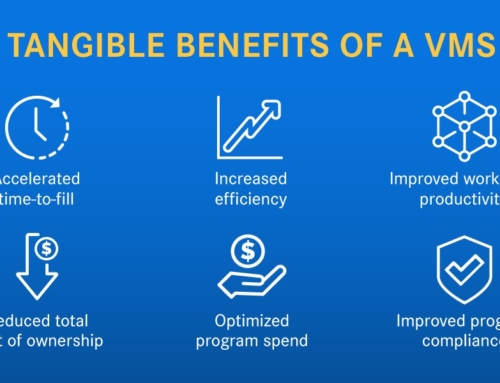Organizations need to get specific about the skills they require to get work done effectively. In other words, they need to become skills based. This was the message delivered by a panel at SIA’s CWS Summit Europe held last month in London titled “Unlocking the Potential of a Skills-Based Organization.”
Becoming a skills-based organization involves finding the most efficient and effective ways to get jobs done. The goal is to optimize performance by aligning job specifications with the skills of employees. And organizations that follow this approach are 107% more likely than their counterparts to place talent effectively, according to panel moderator Simon Bradberry, VP, EMEA, Allegis Global Solutions, citing Deloitte research.
To begin unlocking the potential of a skill-based organization, companies should ask themselves two questions:
- What is the best way to get work done?
- How do we take advantage of the benefits AI will offer?
Three essential steps into the journey tie into these questions. The first is having a “task versus skills” match, which is fundamentally different from a “role versus experience” match. According to Bradberry, understanding the underlying work is key.
Following this, organizations should look at harmonizing their workforce channels instead of having these channels siloed and segmented.
And the third step is incorporating a tech ecosystem that allows for the harmonization of the workforce channels.
Panelists’ Insights on the Skills-Based Approach
In the session, Bradberry interviewed panelists on their organizations’ journey to a skills-based approach.
Katherine Hogbin, global head of talent acquisition transformation at banking and financial services firm HSBC, said her organization has already started on its skills-based journey and has been putting the foundations in place. As for what led to the shift at HSBC, Hogbin noted that it’s not until a business actually has a pain point that they really want to make a change. In the case of HSBC, the company saw a shortage of relationship managers in Hong Kong, which led to a search for the skills involved in that role and candidates who could be trained to do that job. HSBC launched a program last year and found success as they searched both internally and externally and across different sectors for the skills they needed.
Maggie Lind, HR and travel category manager at educational publishing and services provider Pearson, explained that skills are already something they support their clients with. She said when a job is broken down into skills, companies are more likely to have data points to be able to understand if are there elements of that job that could be either automated, supported by AI support or filled by other workers in different sectors.
Lind added that internally, Pearson has already mapped jobs to skills and is on the journey to use those skills to hire.
Bruce Morton, head of strategy at Allegis Global Solutions, agreed and said that in order to increase the size of the talent funnel, the job will have to be deconstructed. Getting the most out of talent also requires thinking about skills in three different ways: inferred skill, where you can infer someone’s skills by their job title and experience; self-reported skills; and certified skills. Morton added that if an organization can plot their skills taxonomy in that way, then they can start to open up different conversations.
Where to Start: Change Management
Contingent workforce programs that make the switch to integrating a skills-based approach have their work cut out for them.
HSBC is already changing its entire operating model, enhancing its employer brand and the way that it goes to market. Hogbin cautioned that the company remains thoughtful in terms of customer centricity as it removes legacy systems that lack the ability to communicate with each other, adding that technology will be the change enabler for this shift.
Another approach to change management at the start of the journey involves internal discussion to keep the organization’s stakeholders aware of this shift. Lind says that while Pearson does not yet have a tech solution, there have been discussions internally which has led to an understanding of skills-based organizations.
In terms of technology, Lind emphasized the importance of having an integrated tech stack with components that interact well, adding that technology should be a crucial aspect early on in the journey.
Meanwhile, Morton advised that finding the right leader inside the business is a first step. He adds that while there are obvious functions to start with, a leader in the business who is facing pain points is more likely to listen and move forward with a skill-based approach.
Overall, Bradberry emphasized that job specifications are not an ideal place to begin and that the fundamental idea for your starting point should be “What’s going to make someone successful in a role?” and not “What is someone going to a do in the job?”
He warned that if the pain point is missing, then the shift to the skills-based approach ends up being something akin to an HR initiative rather than a transformation.









